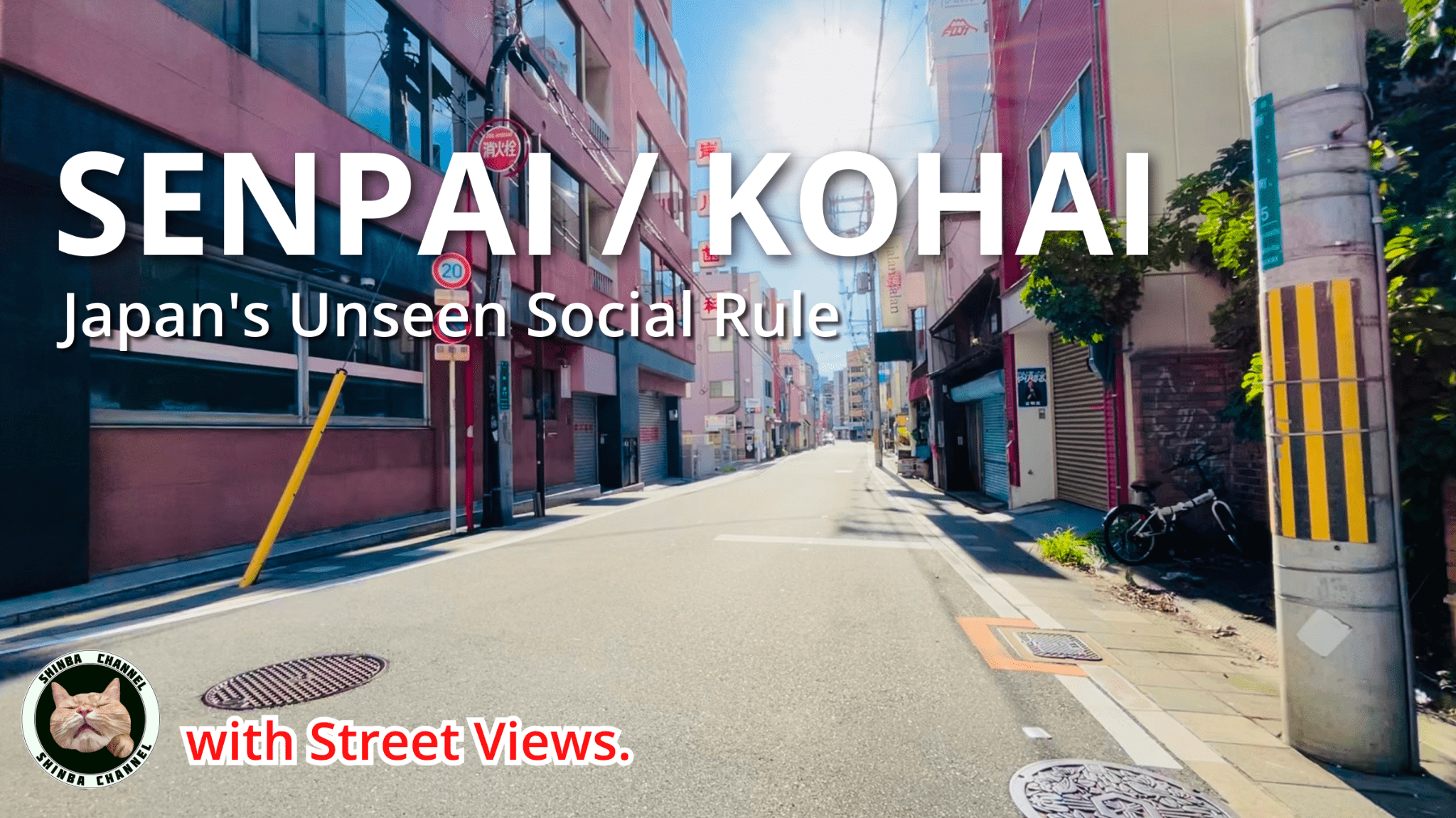This post is a transcript of my YouTube video about the “Senpai-Kohai” relationship in Japan.
What is the “Senpai-Kohai” relationship in Japan?
It’s not just about seniority — it’s a deep-rooted cultural hierarchy that influences Japanese schools, universities, and even workplaces.
In this article, we explore:
- What “Senpai” and “Kohai” actually mean
- How this dynamic plays out in school, university, and corporate settings
- Why this tradition continues even outside formal organizations
- How it affects daily social behavior in Japan
Based on my own experience growing up in Japan and working as a new graduate, I’ll explain the real-life impact of this uniquely Japanese structure.
If you prefer watching, please check the videos below!
🎥 Watch on YouTube
Introduction
Have you ever heard the terms “boss” or “subordinate”?
I’m sure these are words everyone knows, and their relationships are easy to imagine.
However, in Japan, there’s a unique type of relationship that looks like a boss-subordinate dynamic, even among colleagues, and it’s completely separate from official job titles.
This is the “Senpai-Kohai” relationship.
This Senpai-Kohai relationship often begins as early as junior high school, continues through high school and university, and even persists strongly in companies, especially those focused on hiring new graduates.
So, what exactly is this “Senpai-Kohai” relationship?
Today, drawing from my own experiences, I want to deep dive into this unique Japanese dynamic.
What is the Definition of Senpai-Kohai?
So, what exactly is the definition of “Senpai” and “Kohai”?
If you look them up in a dictionary, “Senpai” is defined as “a person superior to oneself in academics, age, or status; also, a person who entered the same school or workplace earlier”.
“Kohai” is defined as “a person inferior to oneself in academics, age, or status; also, a person who entered the same school or workplace later”.
For me, the definition of Senpai as “someone older or who entered the same school or workplace earlier” feels right.
This means that anyone who belonged to the same middle school, high school, university, or company before you is considered your Senpai.
The point at which the Senpai-Kohai relationship begins can vary depending on the environment, but in my case, it started when I joined a club in junior high school.
Speaking from my personal experience, I never really paid attention to the Senpai or Kohai relationship in elementary school. However, when I entered junior high, this dynamic suddenly became very apparent, especially in club activities.
Role of Senpai and Kohai

Now that we’ve clarified the definitions, what roles are actually expected of Senpai and Kohai within an organization?
There isn’t a clear-cut definition, but based on my experience, let’s look at what’s expected of Senpai and Kohai, and how they interact, by organizational setting.
Senpai-Kohai in Junior and Hight School
Even in junior and high school, the Senpai-Kohai relationship already exists. However, opportunities to interact with Senpai, in this case students in higher grades, are limited, mainly to club activities and committee work.
In these settings, Senpai are expected to, for example, “guide and educate Kohai”, “make decisions regarding activities”, and “manage the overall organization”.
As a result, Senpai gain a certain degree of discretion in club activities and committee work.
When they move up a grade and new Kohai join, they are automatically expected to behave as described above, regardless of their personal wishes.
Basically, Senpai usually speak casually to Kohai, and requests from Senpai often hold a certain degree of authority for Kohai. Therefore, a clear hierarchy exists, although it may vary slightly depending on the organization.
The role of Kohai is generally to follow the guidance of Senpai and the organization’s policies, and to quickly adapt to the group.
Kohai typically use honorifics when speaking to Senpai, often the simpler “teineigo” – polite language.
Though less common now, in some strict club activities, Kohai were sometimes responsible for miscellaneous tasks.
Senpai-Kohai in University
At university, similar to junior and high school, Senpai-Kohai relationships exist in club activities and circles.
Additionally, they may also emerge within “departments” or “research labs”.
Within departments, Senpai often organize events and provide various support to their Kohai.
For example, they might organize welcome parties for new first-year students, teach the rules of the department, offer tips on how to efficiently earn credits, provide past exam questions for classes, or even lend old textbooks – essentially sharing useful information.
In my case, kind Senpai organized welcome parties for us, recommended classes, and provided past exam questions for specialized subjects.
The way of speaking usually doesn’t change much from junior and high school, but around this time at meals and especially drinking parties, Senpai tend to treat Kohai or pay more of the bill.
Another significant difference from junior and high school is that the Senpai-Kohai relationship does not always align with age.
Some university students might have experienced “ronin”, studying for entrance exams after graduating high school, so it’s possible for a Kohai who entered later to be older than a Senpai who entered earlier.
However, even in such cases, regardless of age, the older ronin student who entered later will generally be considered a Kohai.
Senpai-Kohai in the Company

When university students join a company as new graduates, the Senpai-Kohai relationship typically emerges in the workplace.
Even if a Senpai holds the same position as a new employee, the Senpai generally takes on the role of “guiding and educating” the Kohai, and the new employee often proceeds with tasks while receiving advice and assistance from their Senpai.
In my case, when I joined my first company as a new graduate, I primarily learned my job from my Senpai.
Furthermore, here, even more so than in university, it becomes common for Senpai to treat Kohai or pay more during meals.
However, in companies, there are also many mid-career hires, and one often interacts with them as colleagues.
In companies with high employee mobility, the Senpai-Kohai relationship may become less prominent.
Common Aspects
While I’ve explained the Senpai-Kohai relationship within various organizations, a common point is that this relationship often continues even in private settings outside of the organization.
For example, if you happen to meet a Senpai on the street, Kohai will generally continue to use honorifics.
Even after graduating from junior or high school, if you have an opportunity to interact with a former club Senpai, Kohai will mostly continue to use honorifics, and Senpai will usually treat them as a Senpai.
Conclusion
In this article, we’ve explored what the “Senpai-Kohai” relationship in Japan is like, looking at it through different organizational settings from school to work.
This kind of relationship might seem a bit strange to people from other countries, but it’s a deeply ingrained concept in Japan that’s very familiar to japanese people.
It continues to have a significant impact on Japanese society and how people behave.
Of course, the perception of this relationship varies considerably
by generation, and it’s less strict now than it used to be.
I hope this article helps you understand a unique aspect of Japanese society.
Closing Remarks
Thank you for reading my article today. I hope you found the information helpful.
If you have any questions, Please share comments on Twitter or YouTube.
thank you
